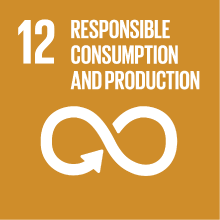INORGANIC CHEMISTRY AND LABORATORY - MOD.1
- Academic year
- 2019/2020 Syllabus of previous years
- Official course title
- CHIMICA INORGANICA E LABORATORIO - MOD.1
- Course code
- CT0351 (AF:274629 AR:157466)
- Teaching language
- Italian
- Modality
- On campus classes
- ECTS credits
- 6 out of 12 of INORGANIC CHEMISTRY AND LABORATORY
- Degree level
- Bachelor's Degree Programme
- Academic Discipline
- CHIM/03
- Period
- 2nd Semester
- Course year
- 2
- Where
- VENEZIA
- Moodle
- Go to Moodle page
Contribution of the course to the overall degree programme goals
The specific training objective of the course is to provide knowledge of inorganic chemistry related to atomic and molecular structure, to the basic acid and redox concepts, to the structure and reactivity of the coordination compounds and to the systematic of the block elements of some elements of the block d. The theoretical course of Inorganic Chemistry and Laboratory aims therefore, on one hand, to complete and integrate some of the basic concepts examined in the General Chemistry course, on the other to offer students modern methodological tools, especially on the structural aspects and structure/reactivity relationships of the main groups of inorganic substances, and in particular of the coordination compounds.
Expected learning outcomes
• Theories of atomic and molecular structure, the structure and reactivity of the coordination compounds and the main characteristics of the elements and their compounds.
• Main methods of performing inorganic synthesis laboratory activities
2. Ability to apply knowledge and understanding
• Ability to use the laws and the chemical concepts learned to solve theoretical and practical problems in a logical and deductive way.
• Being able to realize the synthesis of coordination complexes, and appropriately draw up an experimental notebook and a consequent elaboration that is consistent in the final results, to be made explicit by writing a scientific report.
3. Ability to judge
• Ability to predict the structure and reactivity of inorganic compounds in general and of coordination compounds in particular
4. Communication skills
• Ability to communicate the knowledge learned and the result of their application using appropriate terminology, both in oral and written.
• Ability to interact with the teacher and with the classmates in a respectful and constructive way, especially during the experimental work carried out in a group.
5. Learning skills
• Ability to take notes, select and collect informations according to specific importance and priority.
• Being able to be sufficiently independent in the collection of experimental data.
Pre-requirements
Contents
• Atomic structure: nucleosynthesis, hydrogen atom, polyelectronic atoms.
• Molecular structure: Lewis structures, valence bond theory, molecular orbital theory, structure and properties of bonds.
• Structure of solids: general description, metals and alloys, ionic solids, non-stoichiometric compounds, electronic solids structures.
• Acids and bases: Bronsted acidity, Lewis acidity.
• Oxidation and reduction: reduction potentials, redox stability, chemical extraction of the elements.
• Molecular symmetry: introduction to symmetry, applications, symmetries of molecular orbitals.
• Coordination compounds: nomenclature, composition and geometry, isomerism and chirality, thermodynamic aspects.
• Physical methods in inorganic chemistry: diffraction, absorption spectroscopy, resonance techniques, ionization techniques.
• Descriptive and systematic chemistry of the elements of the main groups. In particular: Hydrogen and alkali metals (Group 1); Alkaline-earthy (Group 2); elements of Group 13, 14 and 15; Calcogens (Group 16), Halogens (Group 17), Notes on noble gases (Group 18). Elements of the d block.
• Complexes of d block metals, electronic structure and properties
• Reactions of complexes: substitutions, redox reactions, photochemical reactions.
• Organometallic chemistry of metals d
• Elements of block f, outline.
Referral texts
• Rayner-Canham G., Overton T. Chimica Inorganica Descrittiva. Edises, 2017.
• G. L. Miessler, D.A. Tarr, "Chimica Inorganica", Piccin, ISBN 978-88-299-2096-9
• D.F. Shriver & P.W. Atkins. Inorganic Chemistry (4th or 5th edition) Oxford
•DOES. Cotton, G. Wilkinson, P.L. Gaus, "Basic Inorganic Chemistry", Wiley, ISBN 978-0-471-50532-7.
Assessment methods
The laboratory test consists in the drafting of a scientific report concerning the experimental activity carried out in the laboratory, containing a description of the experimental approach adopted, the analytical methods used and the assignment of the structure of the prepared products. In this way we evaluate the student's ability to deal with experimental and practical problems, to correctly process a set of experimental data, to report the work by writing in a formal manner. The report is evaluated with a grade between -3 and +3, which will be added to the final grade of the written exam. The report must be delivered at the latest one week before the written exam.
Type of exam
Teaching methods
• frontal lectures;
• two laboratory experiences in which the students perform the synthesis of coordination compounds and their structural analysis;
• transversal learning. The students, divided into groups of 3-5 people, will have to present to the class a topic assigned by the teacher.
2030 Agenda for Sustainable Development Goals
This subject deals with topics related to the macro-area "Circular economy, innovation, work" and contributes to the achievement of one or more goals of U. N. Agenda for Sustainable Development


